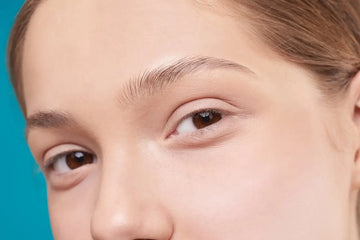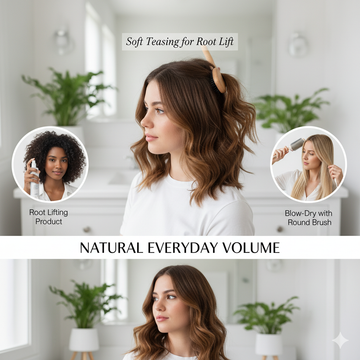If you’re curious about the difference between hyaluronic acid vs retinol, you're not alone. These two powerful ingredients are essential parts of many skincare routines, but they do very different things.
At Vixxar, we create organic skincare products that are gentle yet effective. This guide will break down the difference between retinol and hyaluronic acid, when to use each, and how to use both together for healthy, glowing skin.
Retinol vs Hyaluronic Acid: What’s the Difference?
Retinol is a derivative of vitamin A, which works by speeding up cell turnover. This means it helps your skin shed old skin cells, revealing fresh, new skin underneath. Retinol is great for reducing the appearance of fine lines and wrinkles, fading dark spots, and improving skin texture. It works deep within the skin, making it ideal for anti-aging and acne concerns.
On the other hand, hyaluronic acid is a naturally occurring substance in the body that helps to keep skin hydrated by attracting and retaining moisture. It gives your skin a plump, fresh look and soothes any irritation. Unlike retinol, which works on skin renewal, hyaluronic acid is all about keeping your skin nourished and hydrated.
So, while retinol renews, hyaluronic acid hydrates. Many people use both of these ingredients in their skincare routine, but it's important to know the right way to apply them.
When to Choose Retinol
If you’re worried about fine lines, uneven skin tone, or rough texture, retinol is your best friend. It stimulates collagen production, which can help smooth out wrinkles, improve skin firmness, and even out skin tone.
Since retinol can be a bit strong, it’s best to start slow and use a low concentration at night. Always follow up with sunscreen in the morning, as retinol can make your skin more sensitive to the sun.
Pro Tip: Our Vixxar Organic Retinol Night Cream combines plant-based antioxidants with encapsulated retinol for gradual release, minimizing potential irritation.
When to Choose Hyaluronic Acid
Hyaluronic acid is ideal if your skin feels dry, dehydrated, or easily irritated. It draws moisture to your skin and helps it stay hydrated, giving your face a smooth, radiant look.
Unlike retinol, which works on texture and anti-aging, hyaluronic acid doesn’t target wrinkles or pigmentation. Instead, it keeps your skin soft and nourished, which can help reduce irritation and make your complexion look more even.
Pro Tip: Our organic hyaluronic acid serum uses multiple weights of hyaluronic acid and botanical extracts to hydrate your skin at different layers, giving you deep and lasting moisture.
Can You Use Retinol with Hyaluronic Acid?
Yes, you can! In fact, combining the two can help balance your skincare routine. Since retinol can sometimes dry out the skin, applying hyaluronic acid beforehand can help keep your skin hydrated. Alternatively, you can apply it after retinol to lock in moisture and prevent dryness.
How to Layer Hyaluronic Acid and Retinol: Step-by-Step
Here’s how to layer hyaluronic acid and retinol in your nighttime routine for the best results:
-
Cleanse your face with a gentle, pH-balanced cleanser.
-
Apply hyaluronic acid serum to damp skin to boost hydration.
-
Once the hyaluronic acid has absorbed, apply retinol (start with 2-3 nights per week if you're new to retinol).
-
Finish with a moisturizer to seal in the hydration and protect your skin.
-
Apply sunscreen the next morning to protect your skin from UV damage.
By following these steps, you can get the benefits of both ingredients without overwhelming your skin.
Difference between Retinol vs Hyaluronic Acid
|
Feature |
Retinol |
Hyaluronic Acid |
|
Main Action |
Increases cell turnover, boosts collagen, and reduces wrinkles |
Hydrates, plumps, and soothes skin |
|
Best For |
Wrinkles, texture, pigmentation |
Dryness, dehydration, sensitive skin |
|
When to Use |
Night (must use SPF during the day) |
Morning & night |
|
Potential Side Effects |
Dryness, irritation, sun sensitivity |
Rarely irritates, generally safe |
|
Can You Use Together? |
Yes, layer with hyaluronic acid to reduce dryness |
Yes, apply before or after retinol |
Conclusion
There’s no clear winner between hyaluronic acid and retinol; they just serve different purposes. If hydration and soothing are your priorities, go for hyaluronic acid.
If you’re looking for wrinkle reduction and smoother skin texture, retinol is the ingredient to choose. For the best results, use both in your routine (as explained above) to enjoy the benefits of each.
Explore our full range of organic skincare products at Vixxar, including our Hyaluronic Acid Serum and Retinol Night Cream, to create a personalized skincare routine that’s perfect for you.
FAQs
1-Is retinol or hyaluronic acid better for wrinkles?
Retinol is more effective for treating wrinkles in the long term because it stimulates collagen production and increases cell turnover. Hyaluronic acid can temporarily plump fine lines but doesn't treat wrinkles at their root.
2-Can you use retinol with hyaluronic acid in the same routine?
Yes! Apply hyaluronic acid before retinol to hydrate your skin and reduce irritation, or apply it afterward to lock in moisture.
3-Should I apply hyaluronic acid before retinol at night?
Yes, applying hyaluronic acid first helps hydrate and prepare your skin, reducing the dryness that retinol might cause.
4-What’s the difference between retinol and hyaluronic acid in a serum?
A retinol serum targets anti-aging and skin renewal, while a hyaluronic acid serum focuses on hydration and plumping. Some serums combine both ingredients for added benefits.
5-Which is safer for sensitive skin, retinol or hyaluronic acid?
Hyaluronic acid is much gentler and suitable for all skin types, including sensitive skin. Retinol, however, can be irritating for sensitive skin, so it’s important to introduce it slowly and follow up with proper moisturization.





